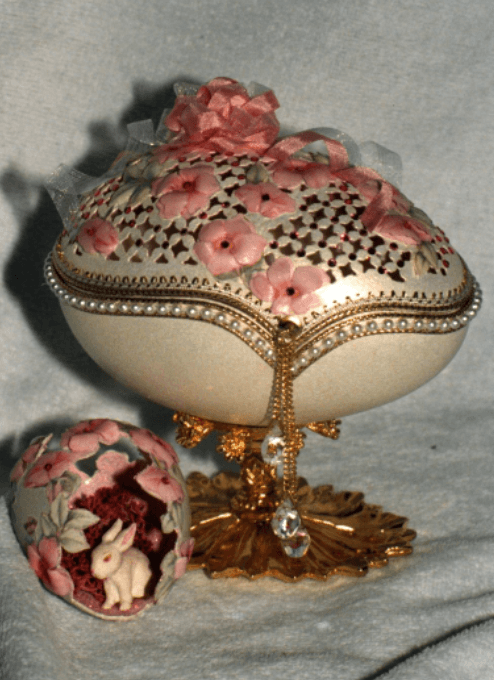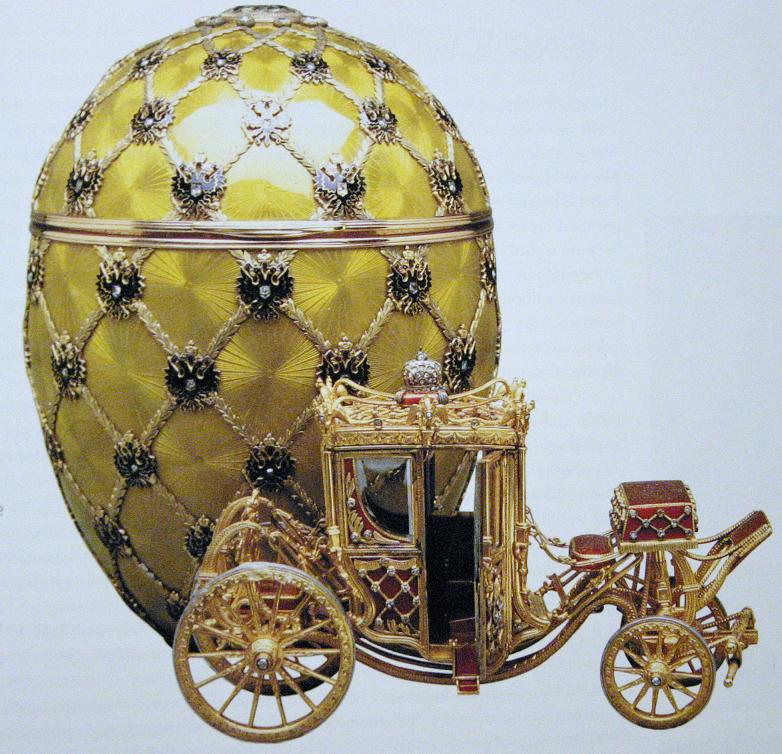
About Egg Art
Most people immediately think of Peter Carl Fabergé, when decorated eggs are mentioned, but many people do not even realise that Fabergé did not use real egg shells. His skills were those of an artist jeweller/ enameller and his materials were precious metals and stones, enhanced by beautifully intricate pavé and shaded enamelling. Working in Russia between 1885 and 1916, Fabergé is best known for his Easter egg designs which were commissioned by the Tsars Alexander III and his son Nicholas II as gifts for their respective wives. Each egg featured a wonderful surprise to delight the recipient and each egg surpassed the previous design. This concept of an added twist‚ to the design is attempted by egg artists today and tiny figurines are sought after to add that extra element to the work. Fabergé's work is highly collectable today and there is a major collection of his work on view at the Forbes Magazine Galleries in New York City.
The little gold-plated coach shown to your right, is one of our range of miniature figurines to enhance your egg art designs in the same way that Fabergé did.
The designs of Faberge’s contemporaries, such as Nikolai Zverev have never achieved the same level of public acclaim, much of which must surely be as a result of Fabergé's patronage by the Russian royal family, however their designs are beautiful and extremely well-executed.
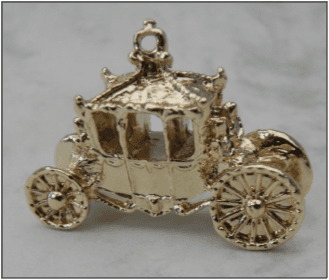
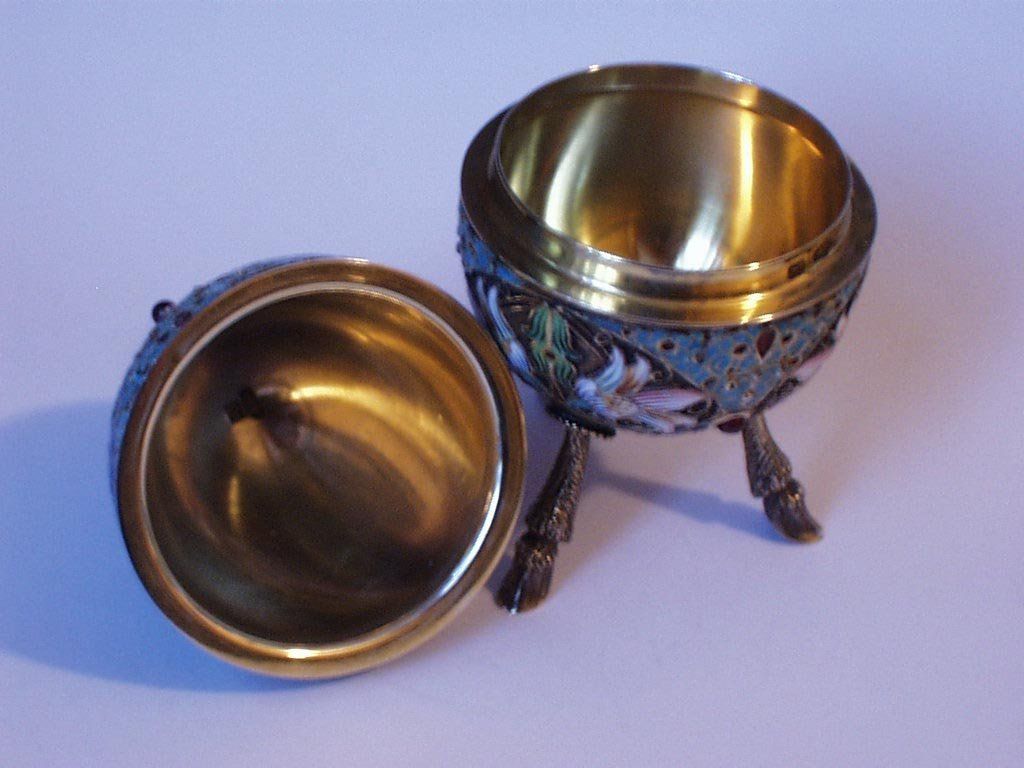
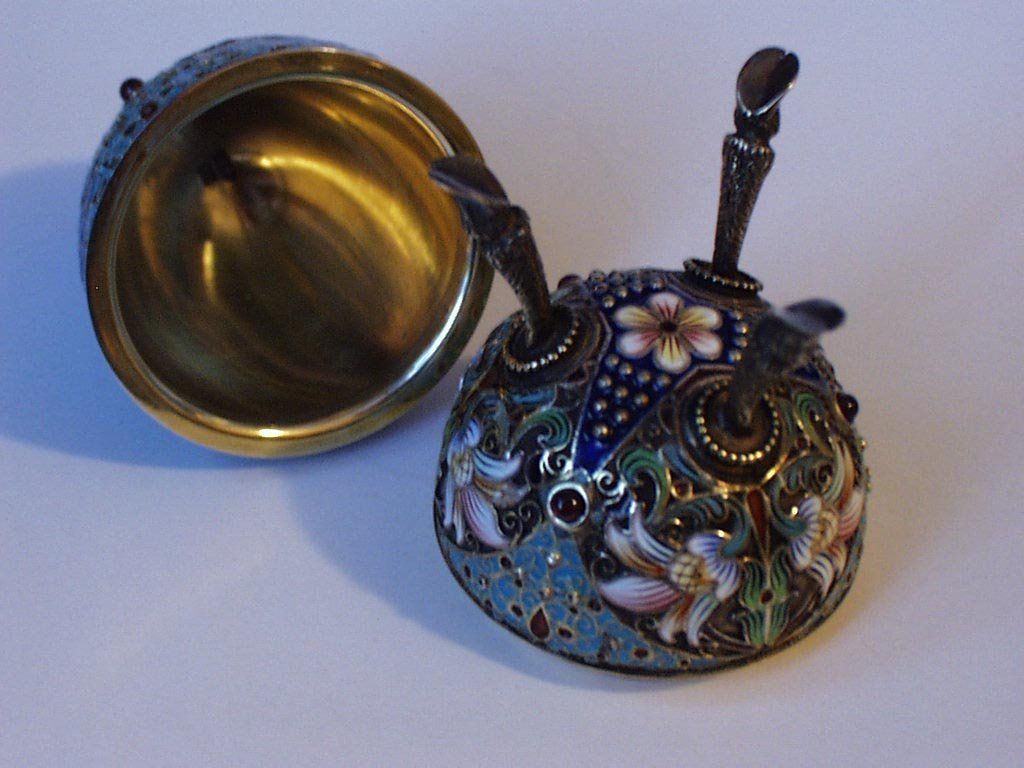
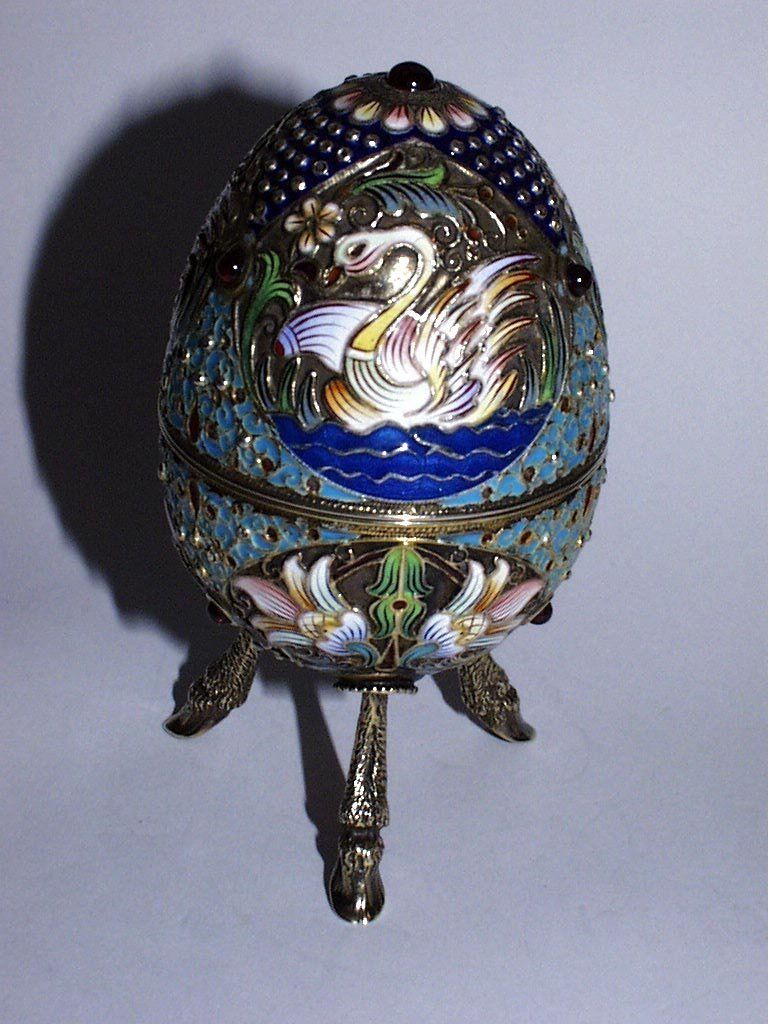
Egg art did not, however begin with Fabergé, but has a history dating back many centuries. The Chinese would cover eggs in gold leaf, aboriginal tribesmen would carve special symbolic designs onto emu eggs and the East Europeans have a history of wax and dye work on eggshells known as Pysanky. Nowadays eggs are associated with Easter time, but the oldest link with eggs is pre-Christian.
The modern style of egg art uses materials taken from many different crafts which makes it a wonderful medium for anyone with a creative flair. Skills from other art forms can be utilised and the method of achieving results may vary from artist to artist. The important concepts to remember are to maintain as high a standard as possible, but at the same time to enjoy creating.
Egg artists today are so fortunate - we have at our fingertips a choice of materials for our designs which have been created over centuries by artists and craftsmen the world over. New technology is constantly providing us with new materials and finishes to use and the technological breakthroughs of our age mean that the exchange of ideas is occurring far more quickly and between so many more people than ever before. If this art, in its many forms, is to survive and grow, we need to help others to learn by sharing our skills and our experiences. Enjoy your creating and help others to enjoy it too.
For more egg art, see our Gallery section.
